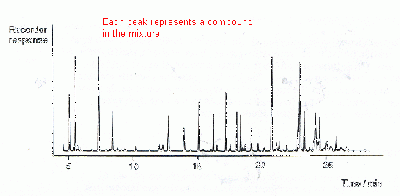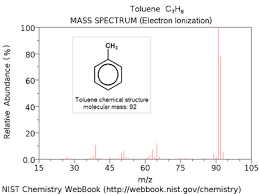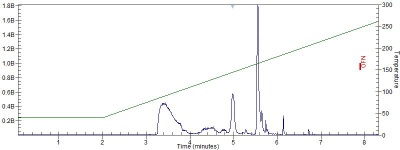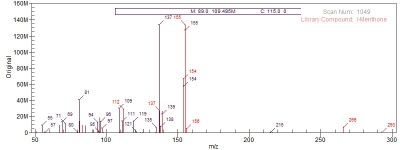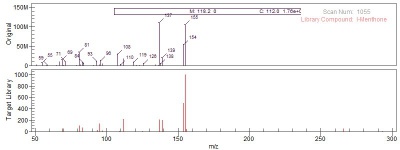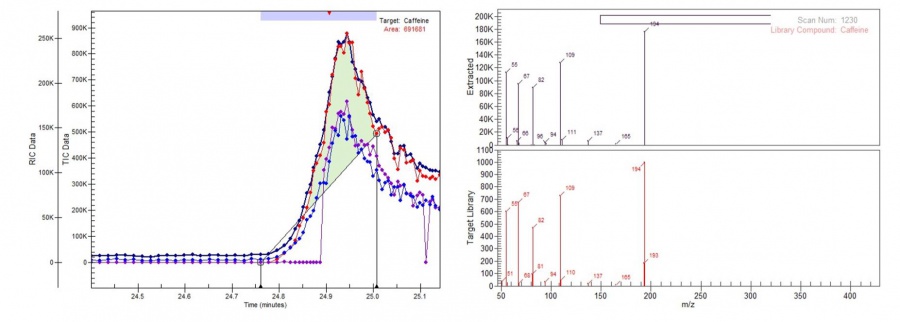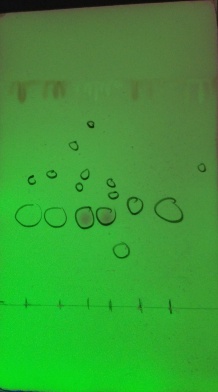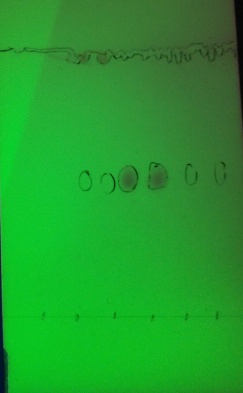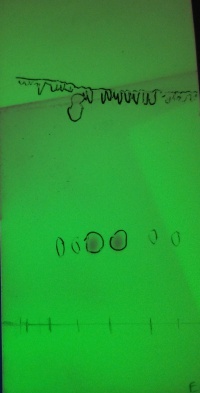GC-MS X-Sorber(Sniffer) Coffee
Introduction
One of the most consumed drinks in the world, coffee, is loved by many due to its flavor and the effects associated with one of its components, caffeine. Coffee is composed of more than 800 individual compounds, most of which add to coffee's intricate flavor. These compounds are produced from numerous variances including the area in which the coffee is grown, its processing, storage, and roasting. In the Monmouth Coffee Project(Insert Link), the biggest effect we can have in the coffee's flavor is in the roasting. During the roasting process, the green(unroasted) coffee is placed into a roaster where the temperature is set to a specific temperature and the coffee is roasted for a set amount of time. The temperature and time are what affects the roast of a coffee. During this process, one of the most prevalent reactions occurring is the Maillard Reaction, a reaction between an amino acid and a sugar.
Process
Individual compounds are currently trying to be isolated from the coffee produced from the Monmouth Coffee Project using a Griffin 450 Gas Chromatographer-Mass Spectrometer(GC-MS). With the help of an X-Sorber, which is a separate collection device, the overhead of roasted coffee is sampled and then analyzed using the GC-MS. The data from the GC-MS is given in two forms, a gas chromatogram(shown below on left) and a mass spectrum(shown below on right). The Gas Chromatogram shows peaks of compounds when they are detected and the mass spectrum fragments the compound in a peak to show various fragments along with their respected mass.
Research
Currently, several overhead samples of roasted coffee have been collected and analyzed using the GC-MS. Initially, vanillin, a compound commonly found in coffee, was believed to have been found but this turned out to be false. After the initial compound, the data were reviewed, and a new compound, p-Menthone, was though to have been identified. By analyzing the mass spectrum and extrapolating what parts of the organic structure of p-Menthone were fracturing off, it was concluded that the peak being researched was indeed p-Menthone. This was verified with analytical chemist, Dr. Audra Goach Sostarecz. The gas chromatogram and mass spectrum used in the identification of this compound are shown below. The first picture(left) shows the gas chromatogram for the sample. The next picture(middle) shows the mass spectrum overlaid with a mass spectrum from the target library on the GC-MS instrument. The final picture(right) shows the actual and target mass spectrum for menthone compared above and below each other.
After identifying menthone, caffeine, a known compound in coffee, was found and analyzed from the data. The gas chromatogram(zoomed in to show the peak) is shown on the left, while the mass spectrum for the peak(top) and the target(bottom) are on the left.
From here, students decided to use a different way to analyze the coffee: Thin Layer Chromatography(TLC). The procedure for this was modeled from Monmouth College's General Chemistry Class's lab on TLC. The procedure followed by the students as well as the General Chemistry class is shown here. Below are three trials using TLC. Each was performed using the same procedure listed in the link. The lines on the bottom of each TLC plate are where certain oils or compounds were deposited. From left to right: bean oil, bean oil, caffeine, caffeine, roaster oil, roaster oil. Each of these has a dot where the caffeine is, showing that there is caffeine is both the coffee oil(from swabbed, roasted coffee) and in the roaster itself.
Future Plans
The following is a proposed plan for future ideas for coffee research. This plan is a holistic approach to analyzing the coffee, from beginning to end.
By: Seth Croslow and Emily Currens
